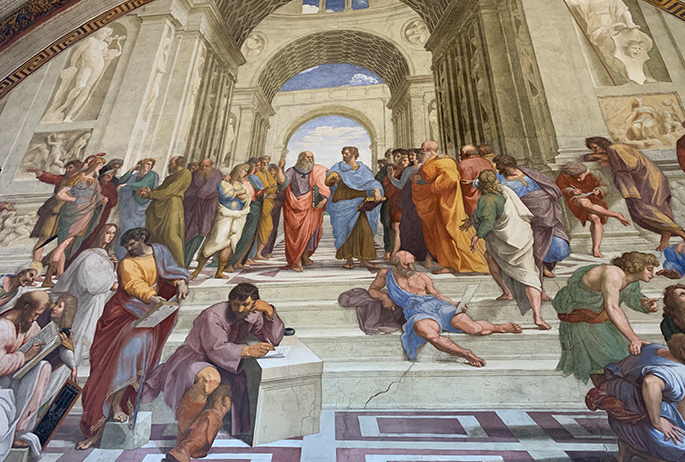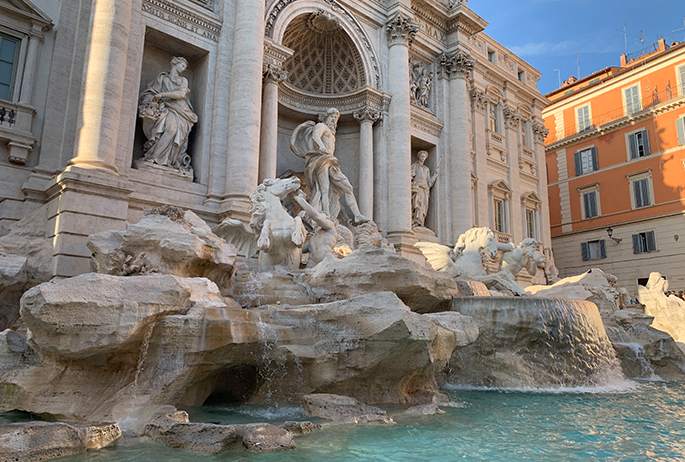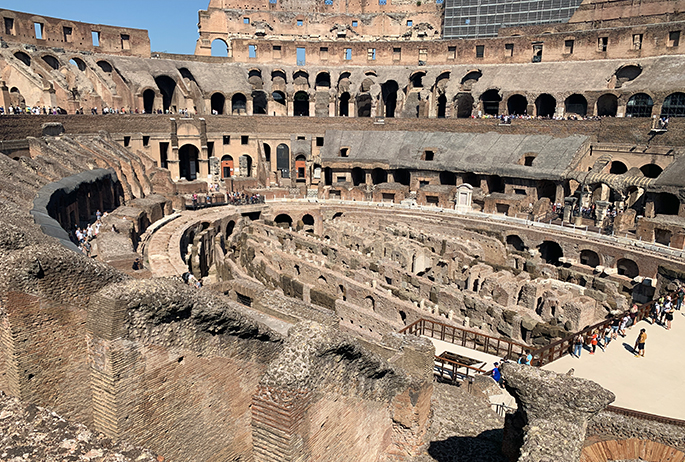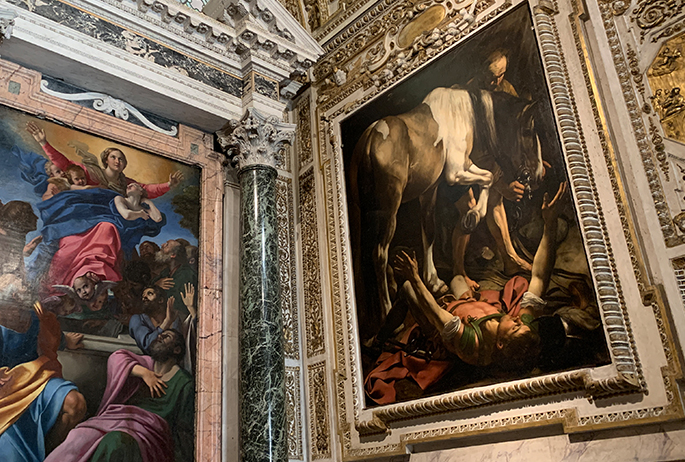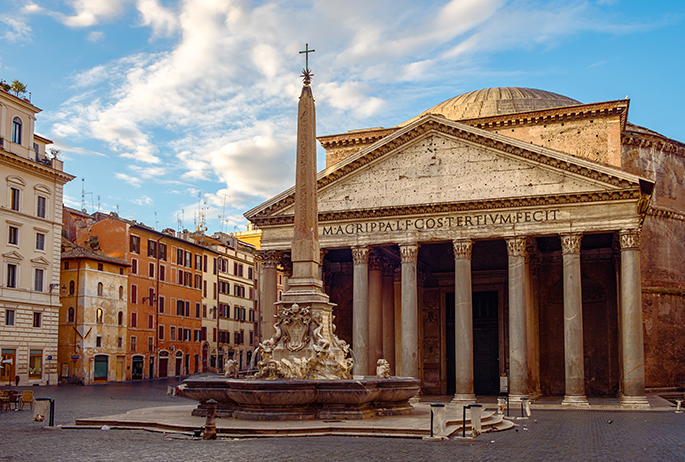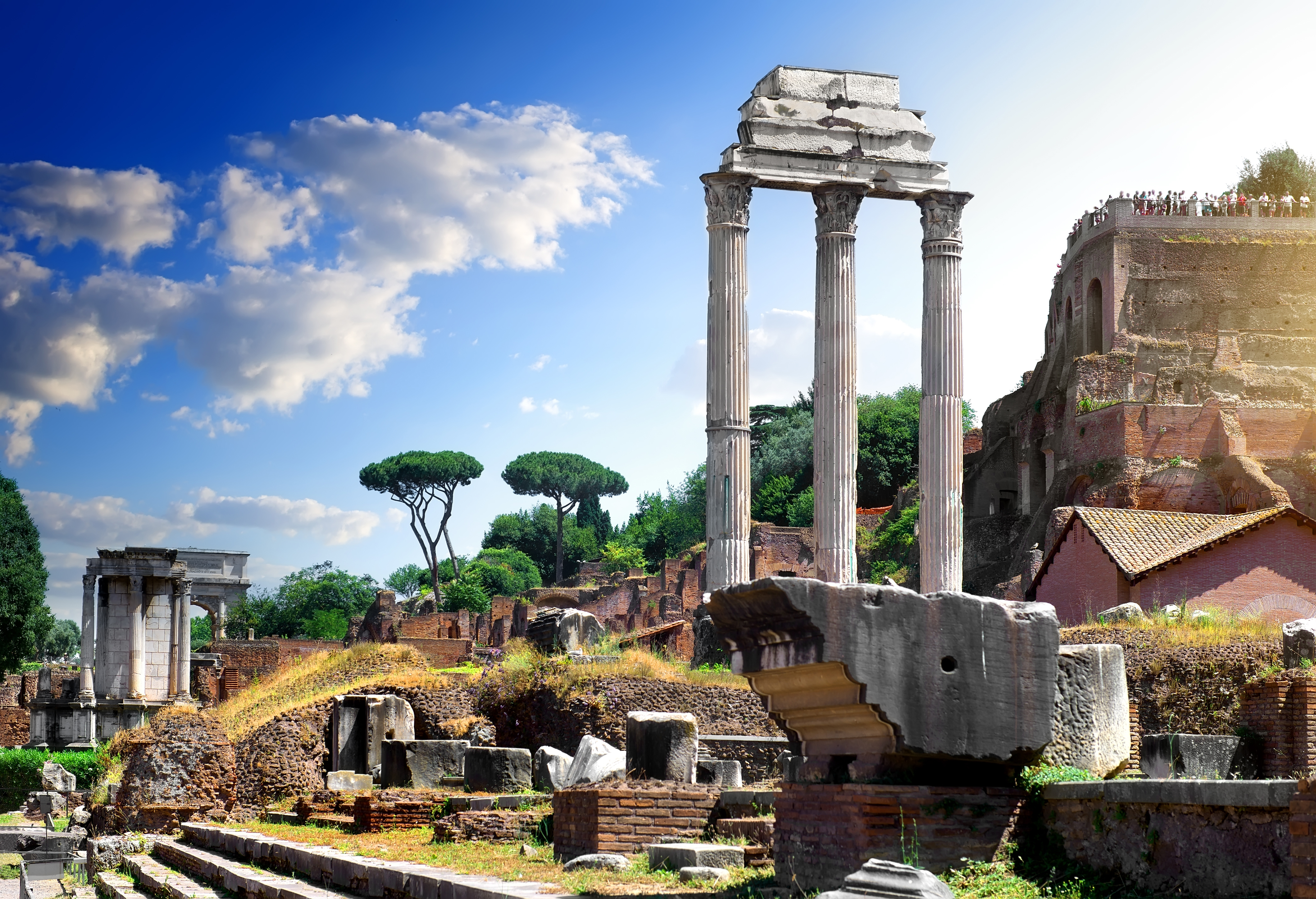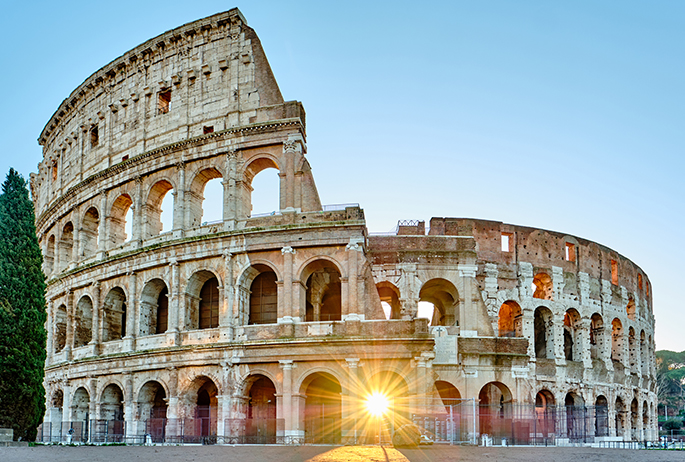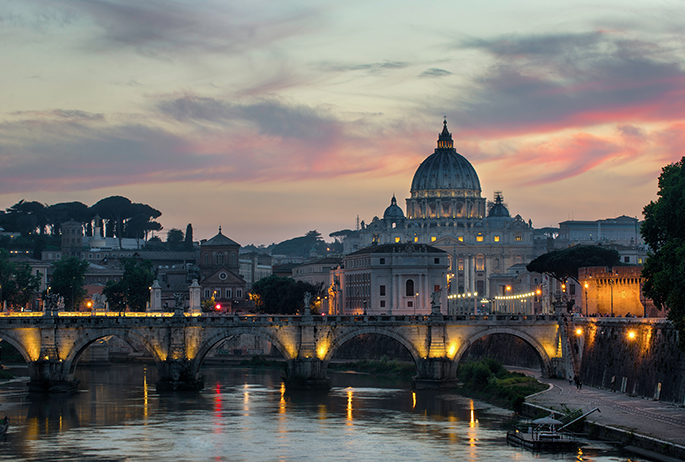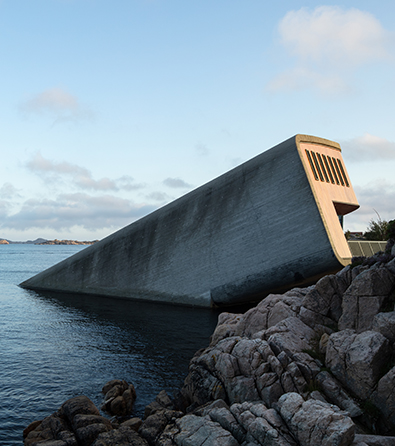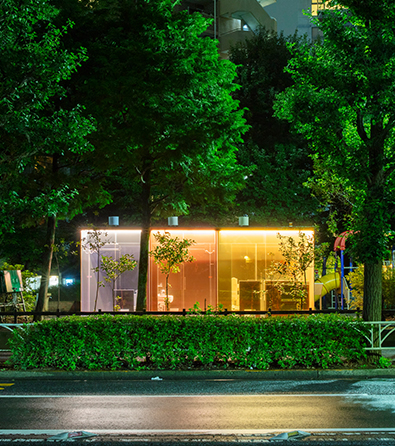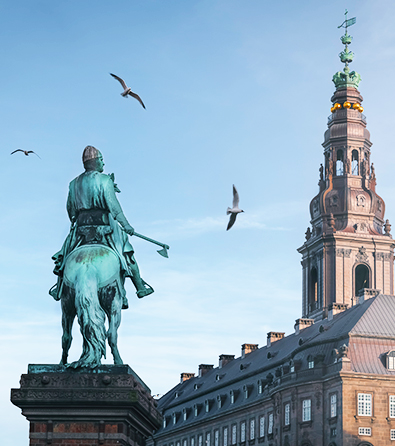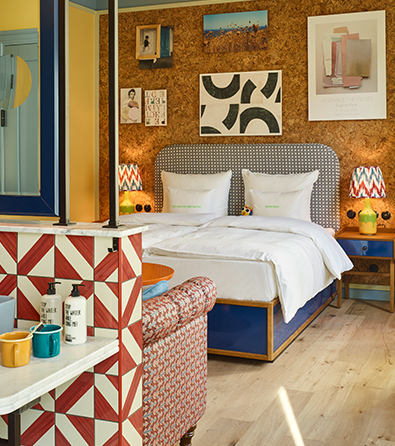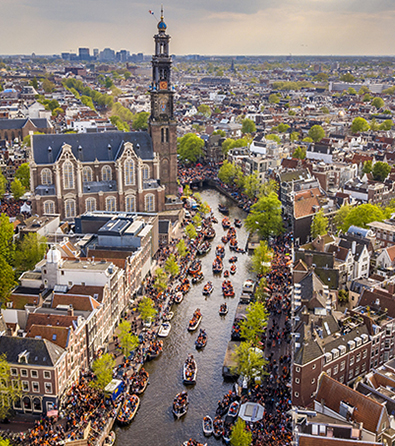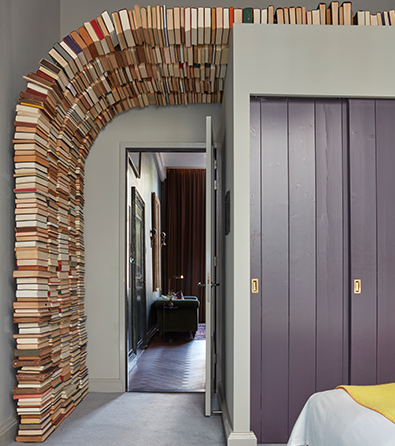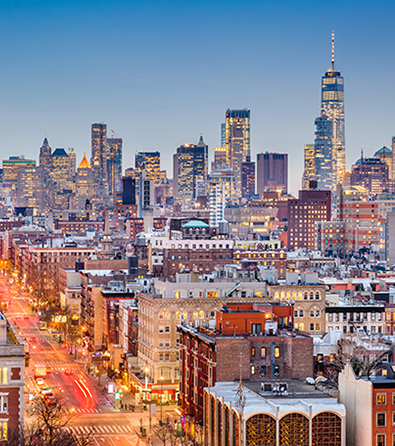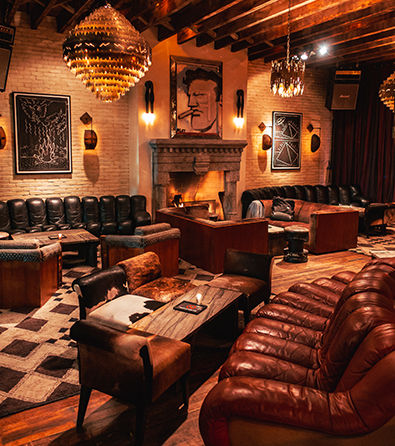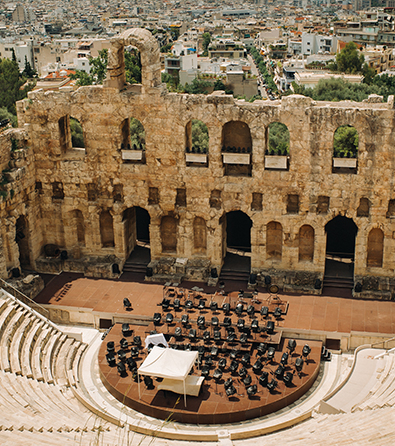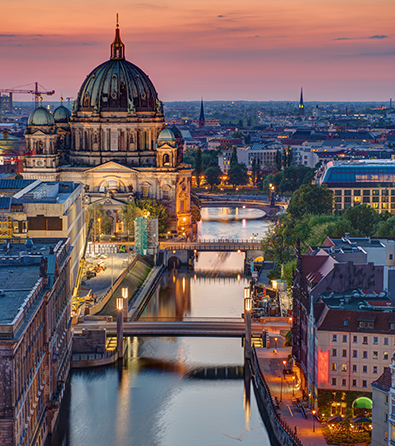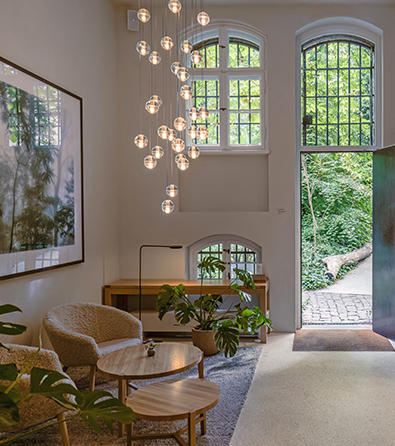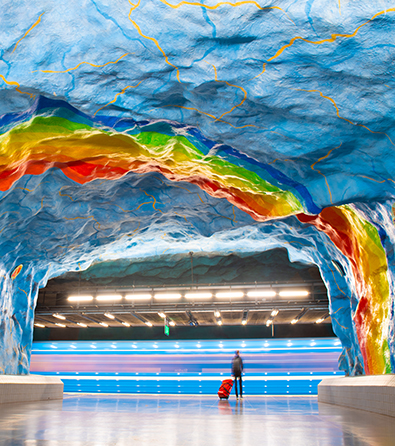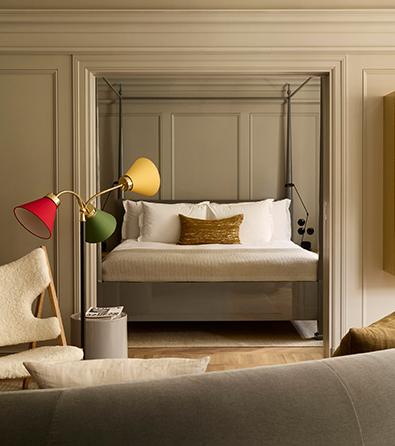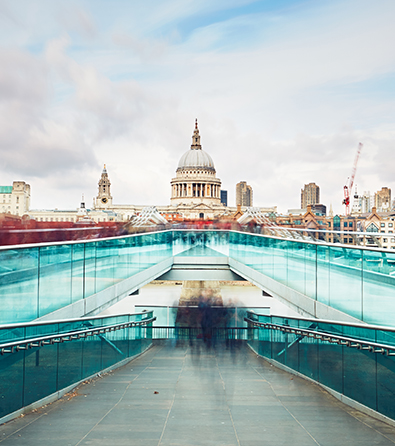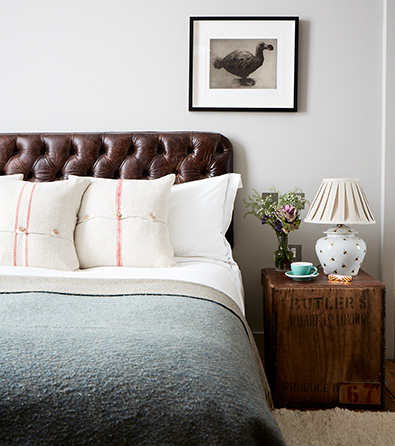Rome is home to some of the world’s most iconic artistic masterpieces, from the Vatican Museums and Sistine Chapel to the Galleria Borghese, housed in legendary museums, churches, and public spaces that bring the city’s cultural legacy to life. With over 2,500 years of heritage, it remains a magnet for art, architecture, and history lovers, while contemporary hubs like MAXXI and MACRO keep the scene forward-looking. From landmarks like the Colosseum and the Pantheon to lesser-known galleries, design shops, and street-art pockets, Rome offers endless inspiration for culturally curious travelers.
To access our exclusive Rome Treasure Map, simply click the attached link and become a Culture Treasures member. The map pins every place in this guide and adds bonus cafés, boutiques and cultural venues. Planning your stay? Explore our guide to the best design hotels in Rome, along with our curated urban travel essentials and long flight essentials for a comfortable journey.
Vatican Museums (Vatican City / Viale Vaticano)
Why go: Masterworks from antiquity to the Renaissance, culminating in the Raphael Rooms and Michelangelo’s Sistine Chapel.
Tip: Book timed tickets in advance (the official site offers a “skip the line” booking). Aim for the first entry of the day, late afternoon, or select Friday evenings when offered; dress codes apply for the Sistine Chapel.
A vast complex assembled by the papacy over centuries, the Vatican Museums display about 20,000 works from a collection of roughly 70,000. Highlights include the four Raphael Rooms, grand fresco cycles by Raphael and his workshop, and the Sistine Chapel, whose ceiling Michelangelo painted between 1508 and 1512, with The Last Judgment added later above the altar. Expect long routes and dense galleries; prioritize your must-sees and allow time for the Gallery of Maps on the way to the chapel.
Galleria Borghese (Villa Borghese / Piazzale Scipione Borghese 5)
Why go: Bernini’s virtuoso marble sculptures and Caravaggio’s canvases gathered under one roof, one of Europe’s great small museums.
Tip: Entry is by timed reservation only, usually in two-hour slots; book well in advance. Arrive 30 minutes early for ticketing and the cloakroom. Closed Monday; light bags only.
Commissioned by Cardinal Scipione Borghese, the villa was designed by Flaminio Ponzio (completed by Giovanni Vasanzio) to showcase the cardinal’s collection of antiquities and contemporary art. Highlights include Bernini’s masterworks, Apollo and Daphne, The Rape of Proserpina, and David, and a deep ensemble of Caravaggio paintings such as Boy with a Basket of Fruit, Sick Bacchus, Saint Jerome Writing, and David with the Head of Goliath. The galleries also feature Raphael’s Entombment (Deposition), Titian’s Sacred and Profane Love, and Canova’s Pauline Bonaparte as Venus Victrix, set within richly frescoed rooms that make the visit as much about architecture as art.
Basilica of Santa Maria del Popolo (Piazza del Popolo / Northern Gate)
Why go: A compact masterclass in Renaissance and Baroque art, Raphael’s architecture, Bernini’s sculpture, and Caravaggio’s canvases under one roof.
Tip: It’s an active church; avoid service times. Bring small coins to illuminate side chapels, and dress modestly (shoulders/knees covered).
Founded in the 12th century and rebuilt 1472–77 under Pope Sixtus IV by Andrea Bregno, the church stands just inside the Porta del Popolo, the historic entry point for travelers arriving from the north. Highlights are exceptional: the Cerasi Chapel with Caravaggio’s Conversion of Saint Paul and Crucifixion of Saint Peter facing Annibale Carracci’s Assumption; and the Chigi Chapel, designed by Raphael (1513–16) with its mosaic dome (after Raphael’s cartoons), pyramidal Chigi tombs, and later additions by Bernini (Habakkuk and the Angel; Daniel in the Lions’ Den). Pinturicchio’s late-15th-century frescoes enrich the choir and chapels, and stained glass by Guillaume de Marcillat survives from the early 1500s. Bernini’s 1650s refurbishment unified the interior, leaving one of Rome’s most concentrated encounters with High Renaissance and Baroque Rome.
Sant’Ignazio di Loyola in Campo Marzio (Centro Storico / Piazza Sant’Ignazio)
Why go: Baroque illusionism at its peak, with Andrea Pozzo’s ceiling that “opens” to the heavens and the famous painted dome.
Tip: Stand on the small marble disk in the nave to see the perspective align. A second floor marker gives the best view of the trompe-l’oeil dome. It is an active church, so dress modestly and avoid service times.
Built in the 1600s to honor St. Ignatius, the church gained fame in the late 1680s and 1690s when Jesuit lay brother Andrea Pozzo painted the vast nave fresco often called the Apotheosis/Triumph of Saint Ignatius. Using quadratura and strict linear perspective, Pozzo turns the barrel vault into an illusion of the sky opening above, with Saint Ignatius received by Christ and the Virgin and allegories of Europe, Asia, Africa, and the Americas radiating outward. Because funds for a real dome ran out, Pozzo also created the celebrated painted “cupola” over the crossing, a flat canvas rendered to look like a coffered dome when viewed from the marked spot. The result is one of Rome’s most memorable lessons in perspective and theatrical Baroque space.
Trevi Fountain (Trevi / Piazza di Trevi)
Why go: Rome’s largest Baroque fountain, an 18th-century stage set with Oceanus at the center, roaring water from an ancient aqueduct, and pure movie-moment atmosphere.
Tip: Go at dawn or late evening to dodge crowds. Don’t sit on the balustrade or enter the basin (fines apply). If you toss a coin, use your right hand over your left shoulder, tradition says it ensures a return to Rome.
Designed by Nicola Salvi and completed in 1762 by Giuseppe Pannini, the fountain rises about 26.3 m (86 ft) and spans 49.15 m (161 ft). At its core is Oceanus by Pietro Bracci, standing in a shell chariot drawn by sea-horses and tritons; the side niches hold allegories of Abundance and Health (Salubrity). Reliefs above recount the origins of the Acqua Vergine (19 BCE), the aqueduct that still feeds the cascade today.
Just a stone’s throw away from the Trevi Fountain lies the authentic restaurant Il Chianti – Osteria Toscana. With a true passion for Tuscan cuisine, this establishment has been serving guests with a top-quality menu since 1965. If you have a sweet tooth, you won’t want to miss out on their heavenly Tiramisu.
Pantheon (Centro Storico / Piazza della Rotonda)
Why go: Ancient Rome’s best-preserved monument, an immense unreinforced concrete dome and open oculus that still awe.
Tip: Entry is ticketed and it’s an active church (Santa Maria ad Martyres). Dress modestly, avoid service times, and go early or late to skip queues.
Rebuilt under Emperor Hadrian around 118–125 CE on the site of Agrippa’s temple, the Pantheon became a church in 609. Inside, the coffered dome spans about 43 m; its oculus, nearly 9 m wide, casts a moving circle of light across the marble floor (with discreet drains for rainy days). Look for Raphael’s tomb and the memorials of Italy’s first kings beneath the vast, beautifully preserved vault.
Contemporary art:
MAXXI – National Museum of 21st-Century Arts (Flaminio / Via Guido Reni 4A)
Why go: Italy’s national museum for contemporary art and architecture in Zaha Hadid’s flowing concrete landmark.
Tip: Closed Monday. Book timed tickets for big shows and allow time to explore the outdoor piazza, bookshop, and café.
Opened in 2010, MAXXI brings two institutions under one roof: MAXXI Arte and MAXXI Architettura. Expect rotating exhibitions of installation, video, photography, and design alongside major architecture holdings and archives. Hadid’s building is a draw in itself, with interlacing gallery “ribbons,” long ramps, and skylit volumes that won the RIBA Stirling Prize. The Flaminio location makes it easy to pair with a stroll through the cultural district.
MACRO – Museum of Contemporary Art of Rome (Salario / Via Nizza 138)
Why go: Rome’s flagship municipal museum for contemporary art inside a converted Peroni brewery, with rotating exhibitions, film, and cross-disciplinary programs.
Tip: Closed Monday. Check the current program before you go; some shows use multiple wings and courtyards, and entry is via Via Nizza or nearby Via Reggio Emilia.
Housed in former brewery buildings expanded in the 2000s, MACRO focuses on contemporary art and hybrid practices across installation, moving image, and performance. Recent years saw the multi-year “Museum for Preventive Imagination” project (2020–2024); in 2025 the museum began rolling out a refreshed program under new artistic leadership. The complex layout, industrial halls linked by bridges and terraces, adds to the experience.
Mattatoio (ex-MACRO Testaccio) (Testaccio / Piazza Orazio Giustiniani 4)
Why go: Striking 19th-century slaughterhouse complex turned contemporary art venue, industrial archaeology meets large-scale exhibitions, research, and live programs.
Tip: Pair with a wander through Testaccio Market or a walk toward Ostiense for street art. Some events happen in “La Pelanda,” one of the site’s main halls, check listings.
Formerly known as MACRO Testaccio, the site now operates as Mattatoio under Azienda Speciale Palaexpo. The brick pavilions and iron canopies by architect Gioacchino Ersoch (1888–91) host changing exhibitions, talks, studios, and festivals, making it a key southern hub for Rome’s contemporary scene.
Sources for verification (not for the page): Mattatoio overview & address; rebrand from ex-MACRO Testaccio; Testaccio complex history.
Villa Medici – French Academy in Rome (Pincian Hill / above the Spanish Steps)
Why go: A Renaissance villa that has hosted the French Academy since 1803, with 7-hectare gardens, a belvedere over Rome, and guided access to historic salons where art and architecture meet.
Tip: Enter via Viale della Trinità dei Monti 1. Book the 90-minute guided tour (offered in English, French, Italian, and Spanish). Closed on Tuesdays; exhibitions are included with the tour ticket.
Villa Medici blends Medici-era architecture with an active residency program for artists and researchers, making it both heritage site and working art center. Visits typically cover the cardinal’s historic apartments, courtyards, and the expansive gardens bordering the Aurelian Wall, finishing at the belvedere for sweeping city views. Alongside tours, the Academy runs exhibitions, concerts, and festivals that connect contemporary practice with the villa’s Renaissance setting. To explore more about Villa Medici, press the designated link.
Galleria Lorcan O’Neill (Centro Storico / Vicolo de’ Catinari 3)
Why go: One of Rome’s flagship contemporary galleries, mixing international heavyweights and Italian talent in a dramatic 17th-century stable complex.
Tip: Open Tue–Sat, typically 11:00–19:00. Check the current show before you go; the space sits between Campo de’ Fiori and Piazza Farnese, easy to pair with a Centro Storico walk.
Founded in 2003, Galleria Lorcan O’Neill helped anchor Rome’s contemporary scene and now operates from the restored former stables of Palazzo Santacroce. Expect tightly curated solo and group shows spanning painting, sculpture, photography, video, and installation, with a roster that has included artists such as Tracey Emin, Anselm Kiefer, Martin Creed, Kiki Smith, Jeff Wall, and more. The vaulted brick bays and long gallery volumes make for striking sightlines, part of why the space is a destination for collectors and curious visitors alike.
Chiostro del Bramante (Centro Storico / Via della Pace, near Piazza Navona)
Why go: A jewel of Renaissance architecture by Donato Bramante, now a lively exhibition venue, with a first-floor vantage to view Raphael’s Sibyls in the adjacent Santa Maria della Pace.
Tip: Enter at Via/Arco della Pace 5. Go up to the first floor by the café (Sala delle Sibille) to see Raphael’s fresco through the window. Weekday mornings are quietest.
Commissioned around 1500 by Cardinal Oliviero Carafa, the cloister is a textbook of harmonious Renaissance proportions and a fitting backdrop for rotating art shows, talks, and concerts. Today it functions as a cultural hub with galleries, a café-bistrot, and a bookshop; from the upper portico, you can admire Raphael’s 1514 Sibyls across the way, one of Rome’s neatest “hidden in plain sight” art moments.
Monitor (San Lorenzo)
Why go: Longstanding contemporary space with a sharp, international program spanning installation, film, and painting.
Tip: Shows often open in the evening; confirm the San Lorenzo address before you go.
Monitor now operates in San Lorenzo with rotating exhibitions that pair Italian voices with global artists, continuing the gallery’s two-decade role in Rome’s contemporary scene.
Montoro12 Residency and Project Space (Centro Storico)
Why go: Curatorial residency and exhibition program supporting emerging and mid-career artists.
Tip: Look for open studios and short-run project shows; schedules can be seasonal.
Based near Campo de’ Fiori, Montoro12 hosts residencies, commissions, and focused exhibitions, giving visibility to research-driven practices in an intimate setting.
Fondazione Pastificio Cerere (San Lorenzo)
Why go: A former pasta factory turned foundation at the heart of Rome’s artist-studio district.
Tip: Combine a visit with a wander around San Lorenzo’s studios and cafés.
The foundation presents exhibitions, talks, and education programs inside an industrial complex that helped launch generations of Roman artists, making it a reliable stop for current discourse.
T293 (Trastevere)
Why go: Gallery known for experimental, concept-forward projects and international rosters.
Tip: Check for performance or publication launches tied to exhibitions.
From its Trastevere space, T293 stages concise, research-led shows that foreground new production across media, often introducing Rome audiences to rising international artists.
Unosunove Arte Contemporanea (Centro Storico)
Why go: Concept-focused gallery in Palazzo Santacroce with a tight program of Italian and international artists.
Tip: Hours can be compact; plan a weekday afternoon visit.
Unosunove’s program favors rigorous, research-based practices presented in a historic palazzo steps from Campo de’ Fiori, making for a compelling old-meets-new encounter.
Gagosian Rome (Centro Storico, Spanish Steps area)
Why go: Rome outpost of the global gallery network, presenting museum-grade shows by major artists.
Tip: Expect single-work installations or tightly curated displays; preview the current exhibition before you go.
Housed in a refurbished 1920s bank hall, Gagosian Rome brings headline names and historically framed projects to the city, a dependable anchor for blue-chip contemporary art.
Take a Break:
Roscioli Caffè Pasticceria – Espresso, maritozzi, and Roman pastries. Handy stop between Centro Storico sights. La Casa del Caffè Tazza d’Oro – Historic roaster by the Pantheon, classic granita di caffè. Sant’Eustachio Il Caffè – Iconic espresso bar since the 1930s, quick stand-up coffee by the church. Bar del Fico – Lively café bar near Piazza Navona, morning cappuccino or evening aperitivo while locals play chess. Romeow Cat Bistrot – Vegan, cat-friendly café in Ostiense for cakes, tea, and a calm reset.
Trattoria Da Enzo al 29 (Trastevere) – Carbonara and amatriciana, arrive early and expect a line. Flavio al Velavevodetto (Testaccio) – Cacio e pepe and gricia, dining rooms set into Monte dei Cocci. Armando al Pantheon – Family-run since 1961, refined Roman classics steps from the Pantheon. Osteria delle Coppelle – Bustling piazza osteria for Roman staples, hidden bar behind the “wardrobe.” Roscioli (Salumeria con Cucina) – Destination for amatriciana, cacio e pepe, and a serious wine list. Ad Hoc (Via di Ripetta) – Cozy spot with an extensive cellar, known for truffle tasting menus.
In conclusion, Rome is a city that truly has it all. From its incredible history and stunning architecture to its delicious food, vibrant culture, and thriving art scene, it’s no wonder that it’s one of the most popular travel destinations in the world. This guide to the best cultural attractions will help you make the most of your trip and discover all that this incredible city has to offer. So, pack your bags, book your tickets, and get ready to experience the magic of Rome. Buon viaggio!
With the interactive map below, you can compare all available accommodation options in the city and find the best prices from a variety of leading providers.
